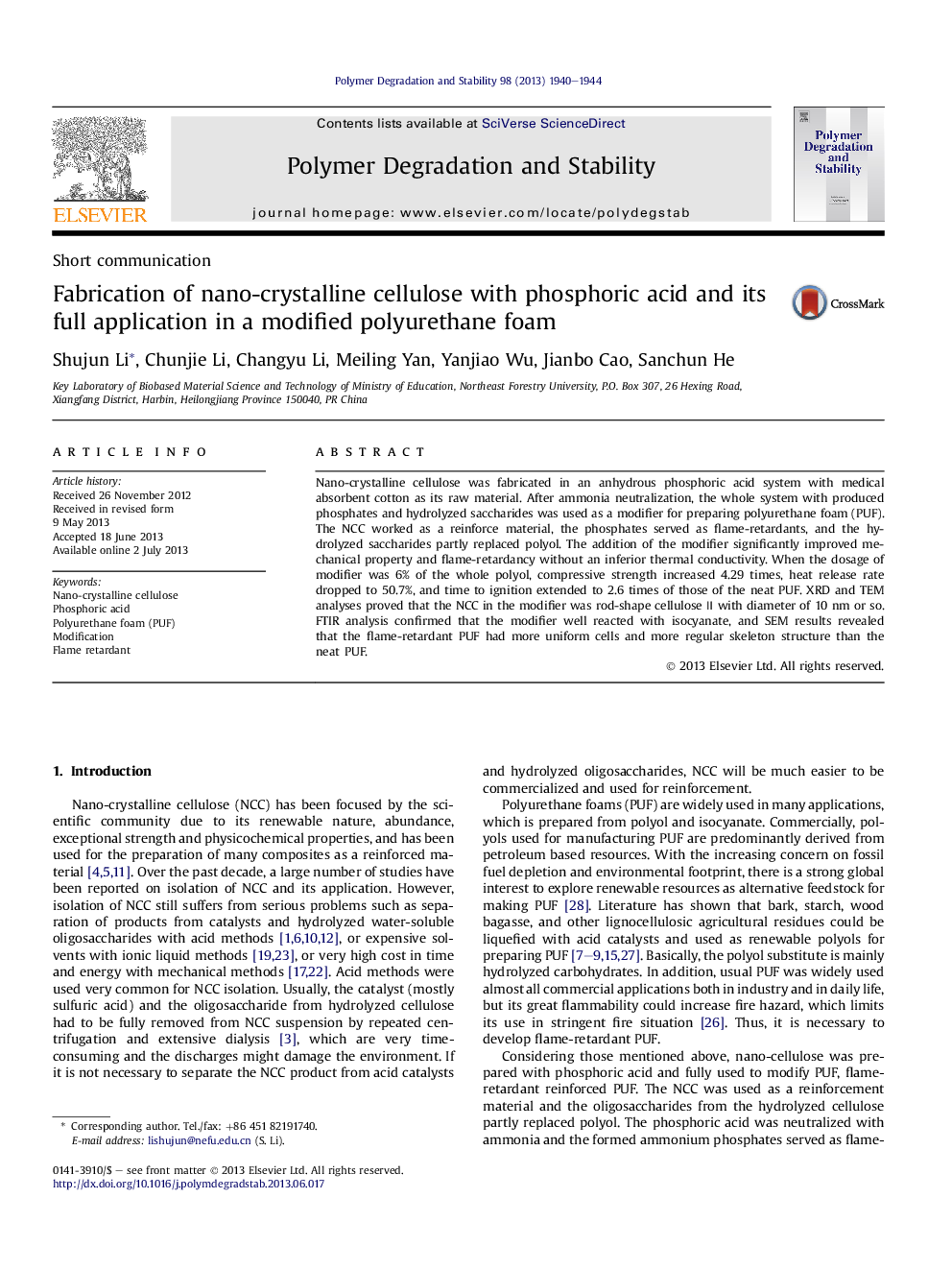| Article ID | Journal | Published Year | Pages | File Type |
|---|---|---|---|---|
| 5202051 | Polymer Degradation and Stability | 2013 | 5 Pages |
Abstract
Nano-crystalline cellulose was fabricated in an anhydrous phosphoric acid system with medical absorbent cotton as its raw material. After ammonia neutralization, the whole system with produced phosphates and hydrolyzed saccharides was used as a modifier for preparing polyurethane foam (PUF). The NCC worked as a reinforce material, the phosphates served as flame-retardants, and the hydrolyzed saccharides partly replaced polyol. The addition of the modifier significantly improved mechanical property and flame-retardancy without an inferior thermal conductivity. When the dosage of modifier was 6% of the whole polyol, compressive strength increased 4.29 times, heat release rate dropped to 50.7%, and time to ignition extended to 2.6 times of those of the neat PUF. XRD and TEM analyses proved that the NCC in the modifier was rod-shape cellulose â
¡ with diameter of 10 nm or so. FTIR analysis confirmed that the modifier well reacted with isocyanate, and SEM results revealed that the flame-retardant PUF had more uniform cells and more regular skeleton structure than the neat PUF.
Related Topics
Physical Sciences and Engineering
Chemistry
Organic Chemistry
Authors
Shujun Li, Chunjie Li, Changyu Li, Meiling Yan, Yanjiao Wu, Jianbo Cao, Sanchun He,
